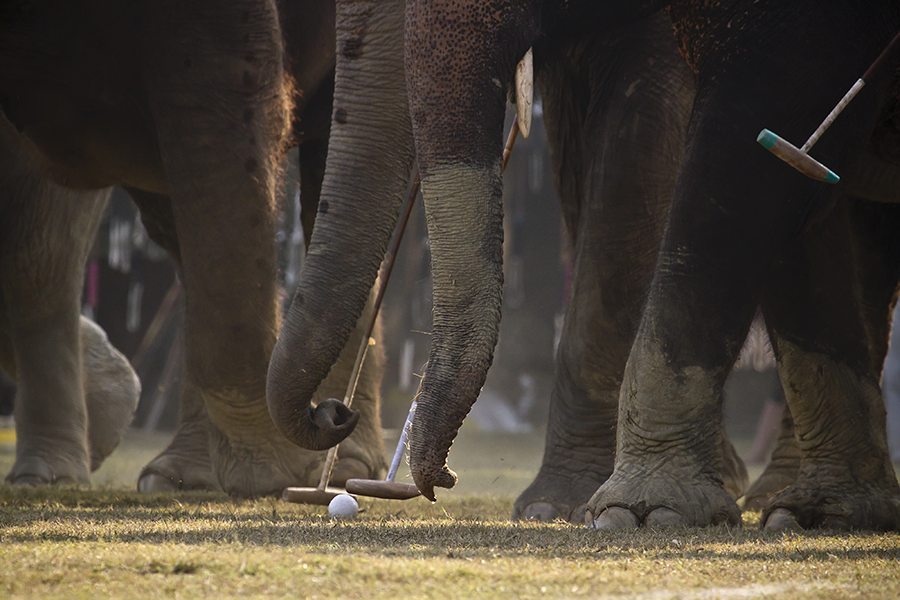Although polo started in Persia as a training game for cavalry units during the sixth century B.C., it has since developed into a widely popular sport and has become one of the world’s oldest team sports.
While most think of polo being played on horseback or in the water, those aren’t the only ways to play the ancient sport. Throughout the centuries the classic game has been adapted into other forms to make it accessible to even more players. If you haven’t tried polo yet, you may just discover there is a perfect version for you.
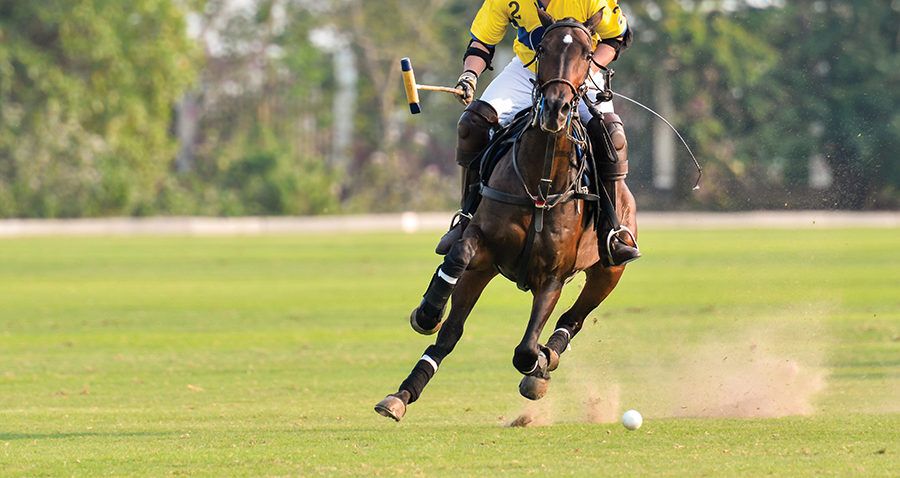
CANOE POLO
Originating in Great Britain, canoe polo is a relatively new take on polo with international rules being established in 1990. In 2005 it became a World Games sport and has been growing in popularity ever since.
Canoe polo is played using the same ball as water polo. Two teams of five compete on a rectangular pitch (or field) that can be in open water or a swimming pool. Matches are played over two 10-minute halves with the teams attempting to outscore the other. Players can use either their hands or paddles to maneuver the ball to the goal which sits about six and half feet above the water.
Two referees oversee the match while on land rather than boats. Canoe polo requires strength and agility while thinking quickly about the next move.
Despite its name, the boats used are specially designed, lightweight kayaks that allow for maximum speed and maneuverability while remaining stable to prevent players ending up in the water. The paddles are also lightweight and specially designed for ball control and quick, sharp movements. Players must also wear helmets with face masks and buoyancy aids.
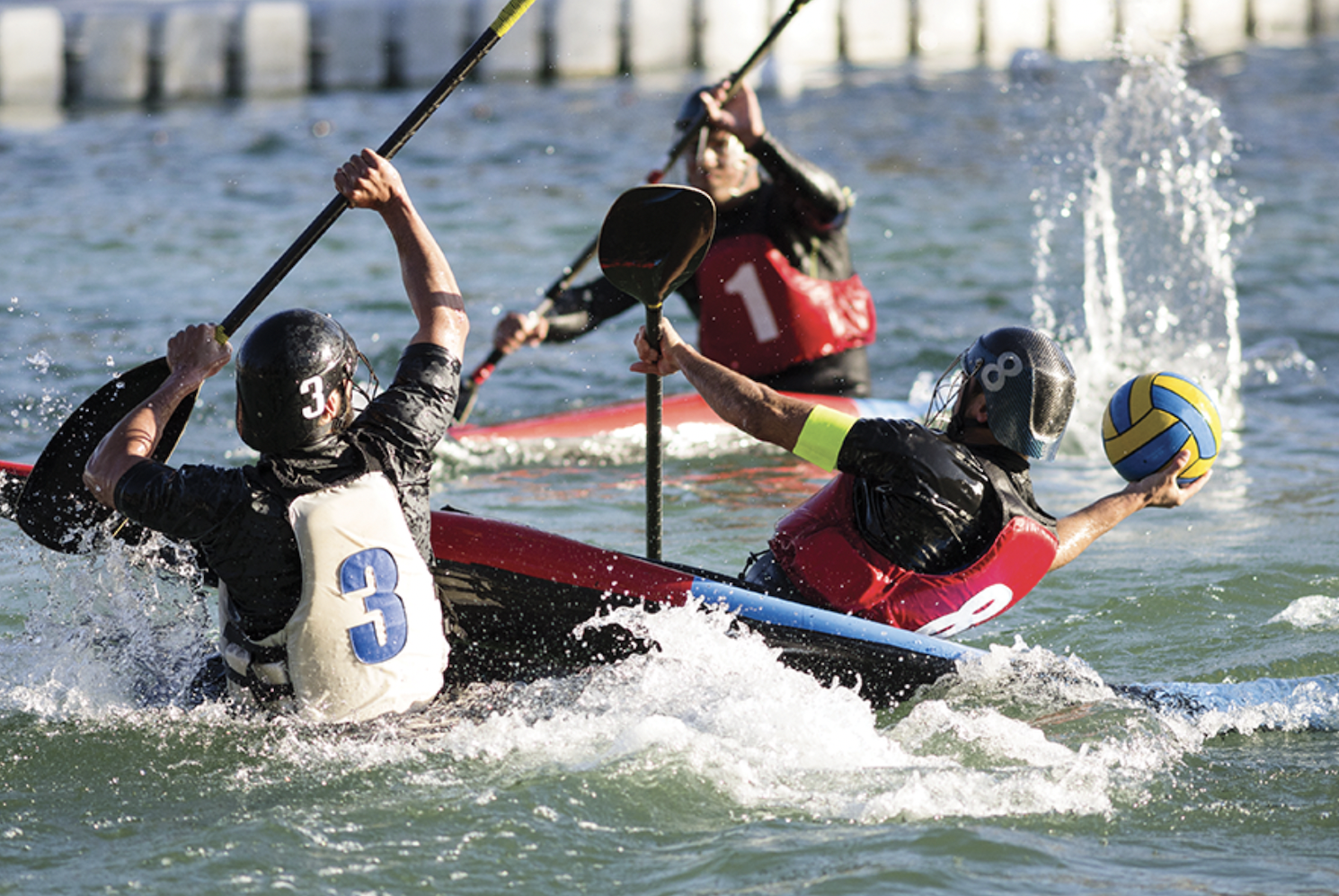
WATER POLO
While it may look like volleyball being played in water, water polo is more a combination of basketball and soccer. The first set of rules for the hugely popular sport was initially developed in 1885 by the Swimming Association of Great Britain.
During a water polo match, two teams compete against each other to score the most goals. In the water, the teams consist of six outfield players and one goalie. Players must constantly be moving and are not allowed to touch the bottom of the pool. The match starts when the ball is placed in the middle of the pitch and the players race from their goal line in hopes of reaching the ball first. The athletes can throw the ball to a teammate or push it in front of them as they swim. Aside from the goalie, players can only touch the ball with one hand.
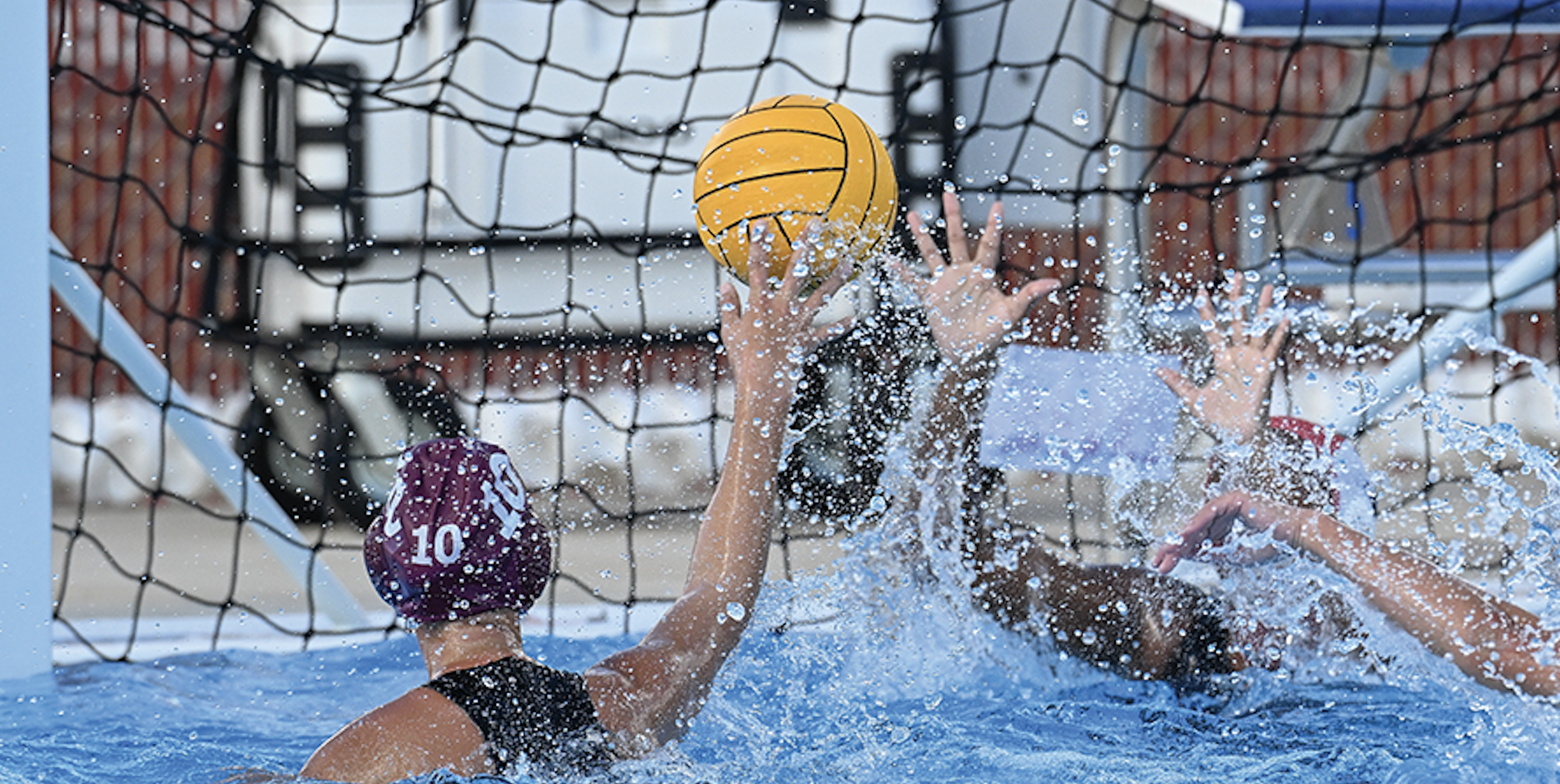
HARDCOURT BIKE POLO
If you’re not a fan of water, hardcourt bicycle polo may be the perfect fit for you. This polo style is played on surfaces like basketball or tennis courts, street hockey rinks and empty parking lots with wooden boards set up to keep the ball within bounds.
The game is played with two teams of three players each. The game starts with each team waiting behind their respective goal while a street hockey ball is placed in the middle of the court. When the game begins, players mount their bicycles and race to the center to take control of the ball. Like other forms of polo, players use a mallet to move the ball towards the opponent's goal (aka two parking cones). To score a point, players must hit the ball into the goal using the end of the mallet; if the side is used, the point is declared no good. If riding a bike while swinging a mallet wasn’t hard enough, players also must get the ball past a goalkeeper. Games can last until one team scores three or five points, or until the game reaches a previously agreed upon time limit.
Unlike other types of polo, there are no expensive animals or special gear required for this version. In fact, this sport embraces DIY, making it accessible to players all over the world. Mallets are typically made from ski poles with the end constructed of ABS pipe. Players most commonly use single-speed bikes with a brake lever on the player’s free side. Bikes are outfitted with DIY wheel covers made from corrugated plastic to protect wheel spokes. Helmets are normally required, and knee pads are highly encouraged. In addition to taking pride in their DIY skills, the hardcourt bike polo community also prides itself on being extremely welcoming to anyone wanting to give the sport a spin.
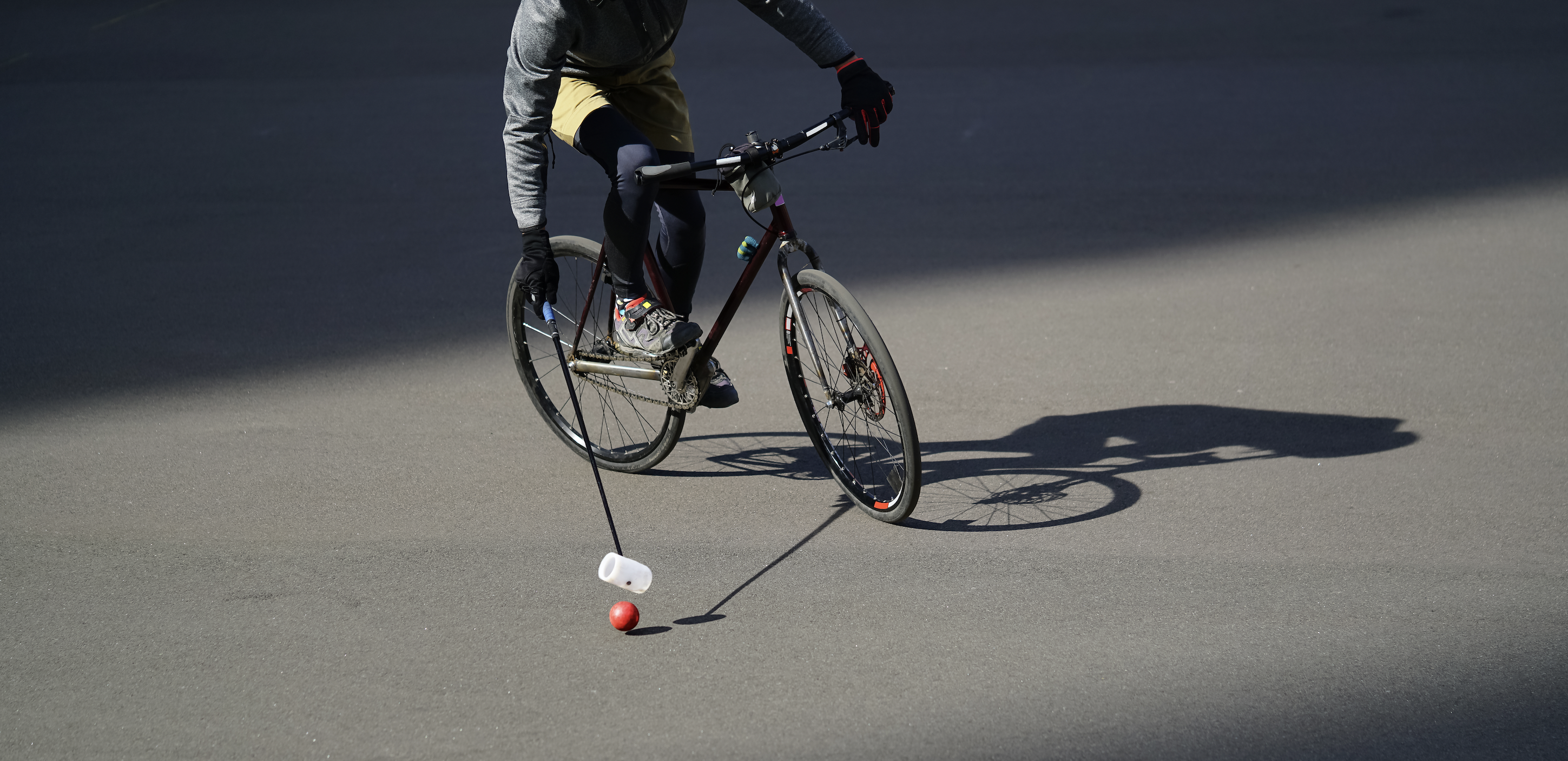
CAN’T GET ENOUGH POLO?
HERE ARE EVEN MORE WAYS TO PLAY THE GAME!
SEGWAY POLO
Wheels replace hooves in this style of the sport, with rules adapted from both horse and bicycle polo. Athletes of all skill levels and ages are welcome to play.
COWBOY POLO
Known as the "average man's sport," this casual take on traditional polo is all about having a good time. Anyone can join in the fun as long as they have some safety gear for themselves and their horse.
ELEPHANT POLO
Following similar rules to horse polo, players compete on the backs of elephants — with zero tolerance for any mistreatment of the animals. After each match, the elephants are treated to sugar cane or rice balls packed with vitamins and water.
